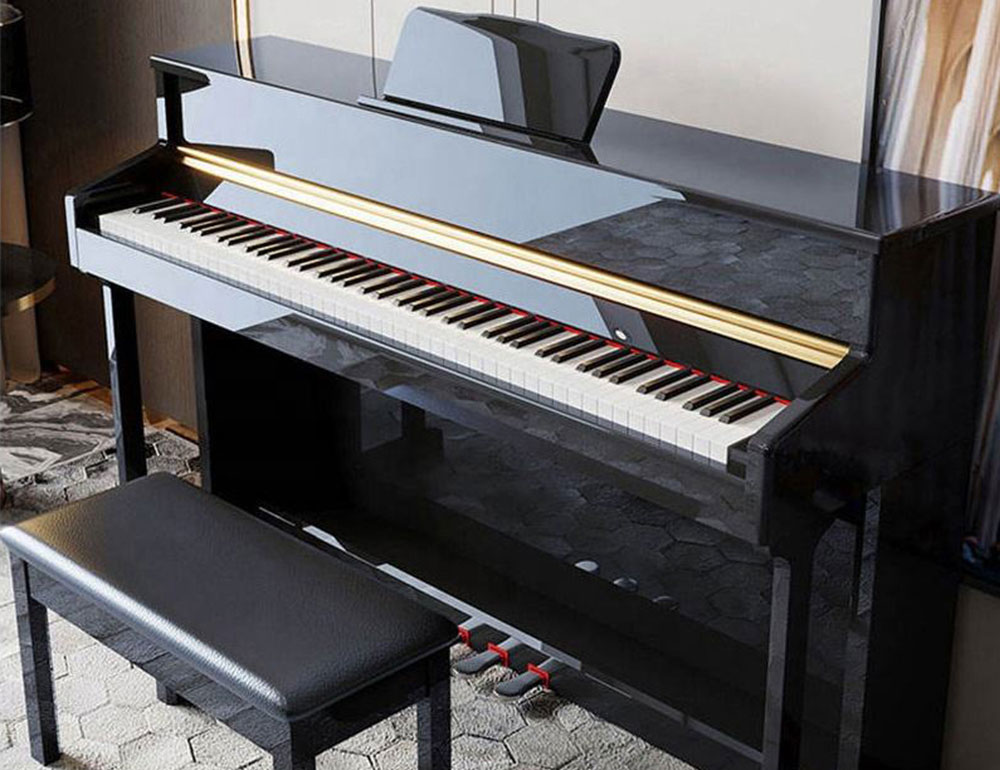Sound Quality and Authenticity
Acoustic Piano: The Benchmark of Sound
Acoustic pianos are renowned for their rich, full-bodied sound that is produced through the intricate interaction of hammers, strings, and a wooden soundboard. Each note played on an acoustic piano is unique due to the natural variability in the materials and craftsmanship. The resonance and overtones created by an acoustic piano cannot be perfectly replicated by digital means. For classical musicians and purists, the acoustic piano remains the gold standard for sound quality and authenticity.
Digital Piano: Technological Advancements
Digital pianos have come a long way in mimicking the sound of acoustic pianos. High-end models use advanced sampling techniques, where recordings of acoustic pianos are meticulously captured and reproduced. Some digital pianos also employ physical modeling to recreate the dynamic response of an acoustic piano. While the sound quality of digital pianos can be remarkably close to that of acoustics, there are still subtle differences that discerning musicians may notice. However, for many players, especially those in genres like pop or jazz, the sound quality of a top-tier digital piano is more than sufficient.
Touch and Feel
Acoustic Piano: Natural Mechanics
The touch and feel of an acoustic piano are a direct result of its mechanical action. The weight and response of the keys are influenced by the physical hammers and strings. This tactile feedback is often cited as a primary reason musicians prefer acoustic pianos. The action of the keys provides a level of control and expression that is difficult to match with digital instruments.
Digital Piano: Emulating the Experience
Digital pianos are equipped with weighted keys and sophisticated key actions designed to replicate the feel of an acoustic piano. High-end models feature graded hammer action, which simulates the heavier touch of the lower keys and the lighter touch of the higher keys. While these advancements have made digital pianos more enjoyable to play, some musicians still find the experience less authentic compared to acoustic pianos. However, for beginners and intermediate players, the difference may be negligible, and the convenience of digital pianos often outweighs the slight disparity in touch and feel.
Maintenance and Durability
Acoustic Piano: Regular Care Required
Acoustic pianos require regular maintenance to keep them in optimal condition. Tuning is essential, as the strings can go out of tune due to changes in humidity and temperature. Additionally, the mechanical parts may need occasional adjustments or repairs. This ongoing maintenance can be time-consuming and costly, making acoustic pianos less practical for some individuals.
Digital Piano: Low Maintenance Solution
One of the significant advantages of digital pianos is their low maintenance requirements. They do not need tuning, and their electronic components are less susceptible to environmental changes. As a result, digital pianos are more durable and require less ongoing care, making them an attractive option for those who want a hassle-free instrument.
Portability and Convenience
Acoustic Piano: Stately but Stationary
Acoustic pianos are large, heavy, and difficult to move. Their size and weight make them impractical for musicians who need to transport their instrument frequently. Additionally, they require a permanent space in a home or studio, which can be a limitation for those with limited space.
Digital Piano: Portable and Versatile
Digital pianos are significantly more portable than their acoustic counterparts. They are available in various sizes, including compact models that are easy to transport. This portability makes digital pianos ideal for gigging musicians, students, and anyone who needs a versatile instrument that can be moved with ease. Furthermore, digital pianos often come with features like built-in metronomes, recording capabilities, and headphone jacks, adding to their convenience.
Cost Considerations
Acoustic Piano: Investment in Quality
Acoustic pianos can be quite expensive, especially high-quality models from renowned manufacturers. They are often seen as a long-term investment, retaining their value over time if well-maintained. However, the initial cost and ongoing maintenance expenses can be prohibitive for some buyers.
Digital Piano: Affordable and Accessible
Digital pianos generally have a lower upfront cost compared to acoustic pianos. They offer a range of models to fit various budgets, from entry-level instruments to professional-grade pianos. The affordability of digital pianos, combined with their low maintenance costs, makes them accessible to a broader audience, including beginners and hobbyists.
Versatility and Additional Features
Acoustic Piano: Pure and Simple
Acoustic pianos are straightforward instruments focused solely on producing beautiful music. While this purity is appreciated by many, it also means that acoustic pianos lack the additional features that digital pianos offer.
Digital Piano: Packed with Features
Digital pianos come with a host of additional features that can enhance the playing experience. These features include various sound settings, rhythm accompaniments, connectivity options (MIDI, USB), and educational tools. The ability to connect headphones for silent practice is a significant advantage for those who live in shared spaces or need to practice without disturbing others. These features make digital pianos versatile tools for both learning and performance.
Our company is a comprehensive enterprise ingratiating research and development, design, production, sales and service. We produce several kinds of electronic piano for all over the world.
If you want to know more details, add my
whatsapp: +86 17706062278. Gmail: anngood88day@gmail.com





